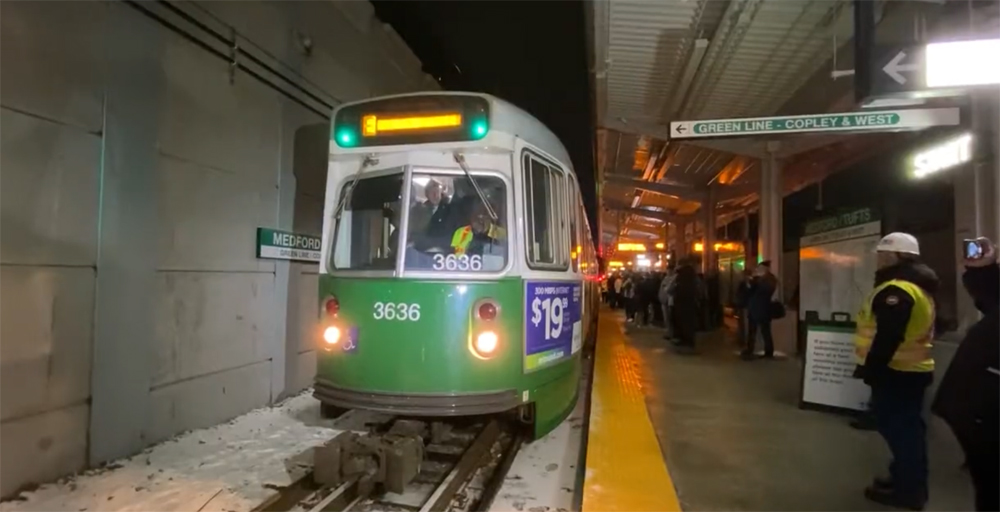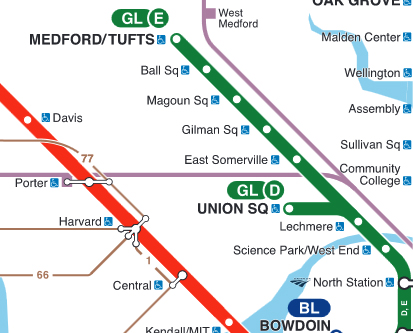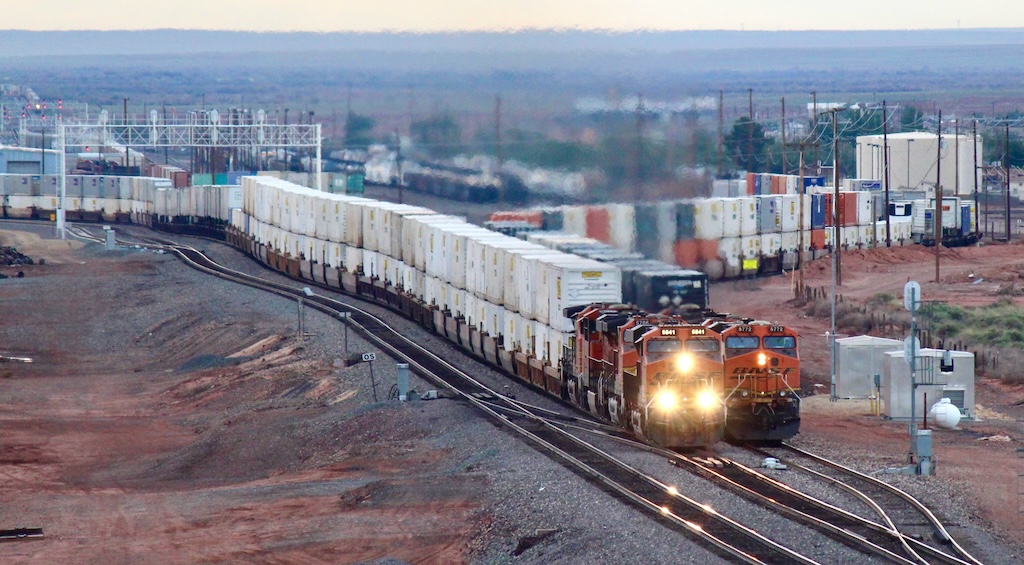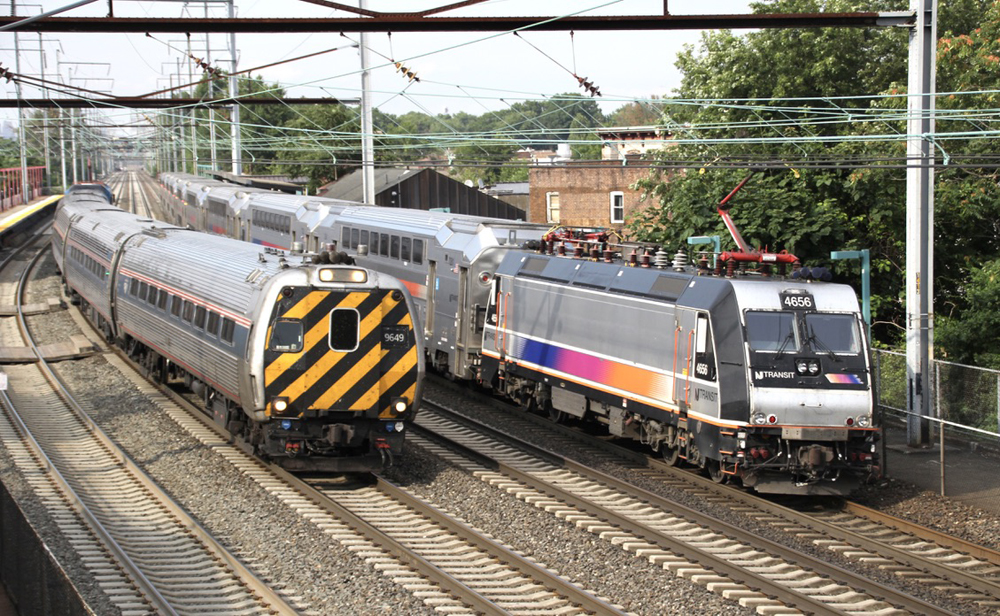
BOSTON — Tracks were built out of gauge on the Massachusetts Bay Transportation Authority’s Green Line extension, meaning the 4.7-mile, $2.3 billion project faces significant rebuilding less than a year after it opened.
MBTA CEO Phillip Eng revealed the problem at a press conference today (Thursday, Oct. 19). An MBTA spokesman said 80% of the extension’s branch to Medford, and 50% of the branch to Union Square in Somerville, would have to be regauged, although Eng told the Boston Globe, “it’s the whole length of the project that I believe needs to be regauged to be back within the contract requirement.”
Eng told the Globe in an interview that said some people within the agency have known the distance between the rails was too narrow on large portions of the extension’s two branches even before the lines opened last December, but no one addressed the issue, no one informed him until last month, and he did not know the extent of the problem until he reviewed project documents.
“I wish I had known earlier,” Eng told the Globe. “Because then I think we would have tackled this.”

The MBTA is working with the project’s contractor on correcting the problem, which will involve repositioning tie plates by unscrewing bolts from the plates on one rail, filllng the existing holes in crossties, then drilling new holes and bolting in the plates at the correct gauge. The process could take weeks, Eng indicated.
The Green Line, like other MBTA transit lines, is standard gauge, or 4 feet, 8½ inches. WFXT-TV reports the construction contract required a track gauge within a sixteenth of an inch of that standard in either direction, while the threshold for slow orders is anything narrower than 4 feet, 8 1/8 inches. Currently, the entire extension is above the slow-order threshold, but about a half-mile on the Union Square branch and 2.7 miles on the Medford branch is narrower than the 4 feet, 8 7/16 inches permissible under the contract.
The station reports that the contractor, GLX Constructors, is a joint venture including Fluor Enterprises, the Middlesex Corp.; Herzog Contracting Corp.; and Balfour Beatty Infrastructure Inc. Eng said at Thursday’s press conference that the contractor should cover the cost of the repairs, although that cost has not yet been determined; an MBTA representative said the agency will be holding discussions with the builders as part of closing out their contract.
Tie plates were improperly positioned on the ties during construction of the Green Line track, a problem detected in inspections at least as early as April 2021, but not addressed. The Globe reports more than 24,000 feet of track gauge was outside of construction specifications on the Medford branch prior to the line’s opening, according to internal emails obtained by the newspaper. The worst problems were fixed before that line opened Dec. 12, 2022, but other problems became public last month when slow orders were enacted at 29 locations that limited the Green Line’s light rail equipment to speeds as low as 3 mph. Those spots have since been repaired.














How fast do they plan to run trains? If plus or minus 1/2″ is good for 90mph, why do they require plus or minus 1/16″?
The extension should have been electric buses with overhead power vs light rail.
Electric buses with a dedicated lane are a far less expensive solution, the buses would be much quieter than the Green Line train cars (ask anyone living off Green Line about the noise), and would have allowed the roadway to be used for emergency vehicle or other uses.
In addition, declining ridership and population (Boston’s population has declined by over 6% since 2019 and the population of the surrounding area is unchanged) calls into question the underlying need for the expansion, which was more the fulfillment of a 40 year old wish by career politicians and union leaders vs a response to the needs of the people
Interesting article. From a project delivery perspective, the achievement of producing a safe, quality, and economical project is the objective. Design and Construction both play a role. Owner, Designer, Contractor, and Inspectors also play important roles. Seeing a contractually mandated tolerance for track gage of +/- 1/16 (0.0625) inches should be recognized as requiring near perfection to achieve. Owner has determined that level of perfection is needed for functionality of product. Designer/Spec Writer has determined technically what is required to achieve design purpose. Contractor has recognized the degree of perfection required and has priced accordingly. From a more technical look, tolerances for manufacture of track components typically allow: rail head width variances of +/- 0.025 inches; rail head assymmetry with rail base of +/- 0.050 inches; rail base width variances of +/- 0.040 inches; spike shank cross section variances of – 0.0156 inches; tie plate rail seat tolerances of +0.063 inches; tie plate spike hole tolerance of +/- 0.030 inches; and tie plate cant variation of +/- 5 with a design cant of 1 to 40 (allow range between 1 to 35 – 45). It would certainly be interesting to see the calculation of the compound tolerances for the manufacturing tolerances that helped lead to establishment of the +/- 1/16th inch overall contract tolerance which includes construction tolerances. As reference, FRA Class V track (passenger speeds to 90mph) permits gage between 4′-8″ and 4′-9-1/2″.
There should have been an inspection prior to opening the line and nobody bothered, it looks like. The old phrase, “Labor doesn’t do what management expects, it does what management inspects,” comes to mind. It isn’t a slam on labor, it is an indicator of what management thinks is actually important.
Sounds like the contractor should be blacklisted to prevent them from bidding on new rail contracts. Exact gauge is the most basic requirement for track installation.
As the great Homer Simpson says, “DOH!”
Wow, it is easy to see how this happened rails have only been 4 foot 8.5 inches apart for the last 175 years or so in this country;) Good grief.
Labor featherbedding crosses my mind.
The Green Line includes a segment which was America’s first subway. They seem to have gotten it right back then (maybe the late 1800’s) but can’t get it right in the 2020’s.
And who at MBTA will be held accountable ?
Why haven’t heads rolled? This is gross malfeasance on the part of MBTA’s contracting office and the company they employed for contract management. And to cover all this up???????? Why risk your career?
It has been reported that Eng did fire 2 persons. Anyone who did cover up any screw ups best report them to ENG and hope that confessions will not lead to termination. However if they don’t then the axe will fall.